#518 Matriarchs of Johnsons Landing
March 28th, 2019

What Forever Feels Like: A Memoir of Johnsons Landing
by Ellen Burt
New Denver: Maa Press, 2018
$23.00 / 9781999554804
Reviewed by Lee Reid
*
 The old magic of “once upon a time” can ambush us, especially when we see the loves and challenges of our own lives mirrored in a memoir like Ellen Burt’s What Forever Feels Like. Is this déjà vu? Why are her stories so familiar? A good memoir makes us realise that a story has always lived deep inside us, waiting and longing to be told. We are never too old for the telling; never too old to discover ourselves tumbling down the rabbit hole, feeling that barriers of time and place have dissolved; never too old to feel the ache of falling in love when we thought our youth was done with. A great memoir might hurt in a good way, and it might just allow us to let go of old wounds, if we let it.
The old magic of “once upon a time” can ambush us, especially when we see the loves and challenges of our own lives mirrored in a memoir like Ellen Burt’s What Forever Feels Like. Is this déjà vu? Why are her stories so familiar? A good memoir makes us realise that a story has always lived deep inside us, waiting and longing to be told. We are never too old for the telling; never too old to discover ourselves tumbling down the rabbit hole, feeling that barriers of time and place have dissolved; never too old to feel the ache of falling in love when we thought our youth was done with. A great memoir might hurt in a good way, and it might just allow us to let go of old wounds, if we let it.
In Ellen Burt’s poignant stories about Johnsons Landing, “forever” creeps into our hearts as subtly as the mists off silvery Kootenay Lake. She creates a forever as unforgettable as the people and culture of the West Kootenay communities in the 1960s and 70s. They were her people, and Johnsons Landing was her revolution. To read about that particular forever is an experience as tender and juicy as the cabbages that a young married Ellen once grew and buried in her garden, roots up and heads down, ripening beneath the blue drifts of snow until spring.
Ellen takes the reader right back into that era. We can taste the fresh milk that Ellen strained from Holly the cow in the seventies, while feeling our way through the memoir of an old woman at the cusp of her seventh decade. This is the gently piercing story of a nineteen-year old Quaker girl from Oregon who, like many youth in the sixties and seventies, felt compelled to oppose the alienating expectations of family and culture by striking out on their own.
In 1969, Ellen married and settled in the remote hamlet of Johnsons Landing at the head of Kootenay Lake. The community was mostly developed in the 1920s on land originally populated by the Ktunaxa or Indian tribe 5000 years before. Until the late 1950s when a road was built, weekly supplies were delivered by boat to the community by the paddle wheeler the SS Moyie. The nearest towns were Kaslo, a half day’s drive, and Nelson, a day’s drive away. The “Old Timers” liked it that way.
Ellen’s stories may hook our deep memory, right down to the bone. The community was partially buried by a mudslide in 2012, but with Ellen, we journey back in time, as though diving to the bottom of the glacial green lake. There, we unearth buried truths of our own life story, within a historical and cultural context that could easily reflect the ideals and suffering of our youth, of our marriages, or our work. You may well ask, “Is this memoir actually describing me, my town, my family, or my ancestors?” Ellen’s Johnsons Landing is so seamlessly vivid with communal activities and relationships, one can’t quite tell where the characters or the reader begin or end. To read her book is to question and rediscover the ideals and values you once thought were your living truth.
 Sitting at Ellen’s kitchen table in 1970, drinking coffee freshly brewed on the wood stove, we savour Ellen’s sweet corn pudding and hot biscuits served with preserved tart cherries and her creamy homemade cheese. This portrait of Johnsons Landing represents that rare and glowing time in life when we felt that we could rediscover and rebuild the world. Do you remember? When curiosity fired up your courage, when love won over caution, that period when you determined to forge a new vision or vocation with your bare hands, and hoped to share the work with others.
Sitting at Ellen’s kitchen table in 1970, drinking coffee freshly brewed on the wood stove, we savour Ellen’s sweet corn pudding and hot biscuits served with preserved tart cherries and her creamy homemade cheese. This portrait of Johnsons Landing represents that rare and glowing time in life when we felt that we could rediscover and rebuild the world. Do you remember? When curiosity fired up your courage, when love won over caution, that period when you determined to forge a new vision or vocation with your bare hands, and hoped to share the work with others.
Against the wild beauty of the Purcell Mountains, Ellen’s memoir unfolds as a woman’s personal story, while touching lightly into historic oppression such as the systematic elimination of the environment and dispossession of Indigenous peoples. Hers is certainly a memoir about suppression of both women and men, but it is more personal than political. She touches on white colonial attempts to extinguish First Nations culture and their people through incarcerating their children in government residential schools, through deliberately infecting the confined children with smallpox, and by destroying their food resources such as the buffalo. She mentions the destruction of old growth forests in the Purcells through unregulated clear-cut logging and dams. She briefly describes the depression of the salmon runs and spawning channels along Kootenay Lake by the Duncan dam, or by the hydro-imposed Kootenay Diversion, which flooded agricultural lands and forested shorelines.
But Ellen Burt was too busy struggling with her own emotional impoverishment and exhilarating muscular lifestyle to grasp these larger political forces at play. The enormity of that oppression remained unconscious and buried, like her cabbages, until memories were ripe and ready to be shaped into a story:
During all those years in Johnsons Landing, I had no awareness that I was also a baby boomer, a hippie, a Back-to-the-Lander, part of a mass social movement. In that life, my awareness extended no further than the barn. Dan and I went to town twice a year. We didn’t have a radio. Race riots in LA? I may have heard a bit of it on the country and western station, after we got our little transistor. A man on the moon? Sounds hypothetical. The Vietnam War? Even though the draft dodgers kept coming, it was not in my consciousness (p. 100).
Courage and heartbreak tessellate the hard lives of people in Ellen’s coming-of-age Odyssey, sparking us to ask ourselves, “What and who shaped my origins? How did any of us become aware of the greater suffering in the world?” We may never be too old to ask, especially in these decades of social accountability where even the environment has a vote. In reading Ellen’s book, one may ask, “Is it possible to learn anything relevant for modern life, from a memoir about isolated Johnsons Landing, now partially buried beneath a mudslide?”
“Forever” holds many nuances for the reader, but Ellen conveys layers of feeling and relationships as freshly painted in 2018 as they were during the cultural revolution of the 1960s and 70s. She takes the reader far beyond words, stories, and history, and into the mysteries of silence. Through Ellen and her characters, we experience the crystalline silence of nature that surrounds human activities with an ancient presence we can only comprehend once it is lost. We witness the violent silence of people shutting each other out, as typical as in Ellen’s own marriage. We experience the strength and stoical endurance of emotionally malnourished women entrapped in parenting and work.
Underlying the communal generosity and geniality, Ellen describes a wordless world of anger and loneliness experienced by those who did not fit into the communal norms. More recently, we feel the silent anguish of a community embalmed under the notorious mudslide of 2012. Those dead would know what forever feels like, and so does the living older Ellen, whose memories and love of the community live on in her book:
I struggle to remember. Forgetting is the stone I must push aside. It is the mundaneness of the present that stands in my way. This pain I feel in my stiff old body. It’s hard not to envy these people as I unearth them from where they lie buried in a story of bliss, on a farm where life was a chorus of laughter, teasing, and mind-numbing work…. From Granny, I learned how to be in Johnsons Landing, how to be a wife (pp. 63-64).
The mudslide wiped out half the community, leaving a ghost-scape of homes and dreams. The old timers still love what they knew. As for the older Ellen, a rich sense of place, belonging, and roots suffuses her memoir as she takes us through her lonely, desperate and hopeful days of homesteading. Whether or not you have ever worked on “the land,” by the end of the book Ellen has become our “old timer.”
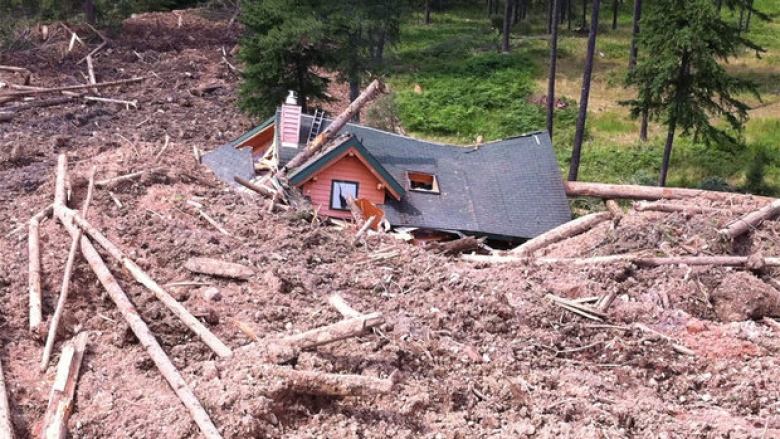
House swept up in Johnsons Landing mudslide of 2012. Emily Elias photo. The slide killed four people and destroyed five houses
Ellen describes her idyllic life in the sixties and seventies as holding two realities: life before the dam, and life after the dam. Before completion of the Duncan Dam in 1969, the area was abundant with old growth forests and fish. Perhaps we can all remember a “before,” when the dream was a paradisiacal union, and “after,” when reality meant dwindling and disconnection. Ellen left Johnson’s Landing in 1980 to live in nearby Argenta, and finally moved to Nelson, where she now lives and writes. She recalls:
At that time, I didn’t know how arduous life would become. I didn’t know how the hard work would wear out my body, long past the time I could keep going, I didn’t know this Johnsons Landing would come to be mine and then I would lose it. I didn’t know I would not be in love with life forever. But no matter how hard life becomes, there is a day in May when the breeze blows clouds across the sky and I pick up the memory of my twentieth birthday, I roll it in my mind, I let it flutter in the wind, and in the sunshine, I feel the same bliss (p 32).
When Ellen arrived in 1968, American draft dodgers, and hippies from across the continent and from Europe, were flocking to the area. Johnsons Landing consisted of a handful of homesteads, a post office, and later, a compact community centre. Ellen followed a dream shared by many baby boomer youth: leave urban life (aka the “rat race”); fall in love, build a log cabin, and participate in communal or community living. In her dream, she and her man would own a farm where they would grow and cook food from their land. They would raise chickens, turkeys, pigs, and they would milk Holly the beloved family cow; they would bake, can and cook food on a wood stove, while happily surrounded by their children. In Ellen’s dream, she would be adopted into the community of Old Timers, those established farmers, miners, trappers, fishermen and loggers, where she would be loved and valued as a wife and, most importantly, as a strong mountain woman, skilled in survival.
She wanted to be respected like country matriarchs Ruth Burt, aged 55, or Granny MacNicol who was in her seventies when Ellen arrived. The community revered these tough older women who endured alone long after their men left them or had died. Strong women cooked for everyone, and ideally, the community helped them to build their homes and to remain independent in them through their aging. What sustained them through the continual losses of their men, children, friends, and physical abilities, was hard work and friendships. Ellen, who tells us she learned very few skills from her Quaker parents, wanted to be just like these hardy women. Quakers believed in pacifism and communal work. Argenta, about eight miles from Johnson’s Landing, was originally settled by Quakers, who prayed in silence. Silence brought both rapture and torture to Ellen.
Johnsons Landing women were strong, but Ellen describes a lifestyle where rural women and men hid their suffering and loneliness behind walls of silence. Women in particular learned to suffocate their emotional needs and feelings. Ellen married into a pioneer legacy of suppression, which ironically, was not unlike her mainstream American parents and childhood. We realise that, in her journey, she must come to terms with her past, to discover her unique strength, to learn her own voice and to trust her inner direction. It is the heroine’s journey. Whether or not the reader has ever developed farming skills or built their own home, the book is an education in land survival and homesteading skills.
Teapots became one measure of her ideal to be the perfect wife. For other women of the time, success might have been baking bread or sewing and weaving, or growing gardens and preserving food, but for Ellen, it was her daily brewing of tea in the teapot, while singing an idyllic if unconvincing song of marital bliss. “Tea for two, and two for tea … me for you and you for me.”
Of course, it was not all true. In Johnsons Landing, work usurped love. Ellen expertly learned how to split shakes, milk cows, strain fresh milk and make cheese, kill and de-feather fowl, doctor injuries and amputations of all stripes, plant trees, wash diapers with raw red hands, dig septic tanks and waterlines, bake bread. She also learned that the sexual revolution of free love flourished in the wilderness. When marriages floundered, the partners simply had affairs.
The east shore of Kootenay Lake between Argenta and Johnsons Landing. Photo courtesy of Willet Wilderness Forever
Despite ideals of belonging within a community far away from familiar friends and family, loneliness and frustration festered underground. As emotional pain grew, people worked harder, partying all night at country dances until it was time to go to work. Throughout the book, young Ellen struggles to convince herself and the reader that she is working for love, driven by the belief that love (and deprivation) thrives only on doing. “Sitting there against that rock pile, stones supporting my spine, stones touching my hands, I decide this is what love is, to return again and again to something warm and familiar, to fall over and over” (p 143).
Granny taught Ellen the law of the land: “A man may work from dawn to setting sun, but a woman’s work is never done” (p. 23). Ellen learned that you either had to learn how to work, or you left. She learned that, in unremitting work, one could bury or ignore all the complications of relationships. With unconvincing desperation, as the disappointments piled up, she continually reiterates, “I was still in love with my husband” (p. 136).
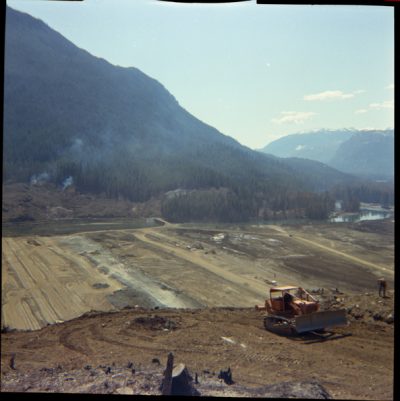
Work for local hippies: Duncan Dam under construction, 1966-67, with the Duncan River still flowing. Photo courtesy Stevens studio
Many parental readers may see themselves mirrored in idealistic Ellen, who describes the bondage of young motherhood, cabin fever, and raising two sons: “If I weren’t wiping noses, I think I would be loved” (p. 165). “The girl I used to be was lost, the one who had come to life in a log cabin and a garden surrounded by a rail fence, and I became once again one who struggles to fit in, retreats into daydreams, numbs happiness. One who shuns her body because she is not loved” (p. 15).
There are comical and exquisite twists to this book. We enjoy the potluck feasts, the dances, the skating parties, the communal rush to the hospital when somebody gets injured, and the generosity of neighbours stepping in to help. With ironic humour, Ellen depicts the conflict between the hippies and the rednecks as “soybeaners vs snowmobilers.” We laugh at their differences and we learn that, although opposites clash, ultimately they can join forces to forge a stronger community. In Johnson’s Landing, that was how people survived. They leaned on each other. Many hippies ended up working on the Duncan Dam, or working in the trades, earning themselves the ironic label, “Hippies made good.”
This is a book with a scope broader than the tensions of work and love and belonging. Important as they are, the overarching theme in Ellen’s book is justice. So emotionally potent is the book, the reader does not immediately grasp a powerful and looming message: this book is about personal and collective responsibility. Johnsons Landing reflects how we avoid unpleasant feelings and choices, and, ultimately, how the cost of running away or burying ourselves in work destroys relationships. Will we learn from the mistakes of the past, or will they too bury us in forgetfulness or regret when we are too old to escape?
The book may confirm life lessons that you, the reader, have struggled with: that love does not come from external achievements, as Ellen had hoped. That unrelenting hard work burns out bodies and minds, as the matriarchs of Johnsons Landing like Ruth and Granny, or Ellen herself, would attest. We see that, whether you live a strenuous country life or retire to a low-maintenance condo, no one remains strong and invincible as they age. Inevitably, the strong like Ellen or Ruth are forced to move to town or to communities where there are more services for seniors. Even the most independent old timers eventually become fragile.
 Ellen describes how old lives dwindle to small corners of “managing,” and through the stubborn examples set by the old timers, we discover that we really do need other people to survive. We understand why young Ellen forged her identity in Johnsons Landing, but chose to move to Nelson when paradise became a prison.
Ellen describes how old lives dwindle to small corners of “managing,” and through the stubborn examples set by the old timers, we discover that we really do need other people to survive. We understand why young Ellen forged her identity in Johnsons Landing, but chose to move to Nelson when paradise became a prison.
Although her memoir skirts blaming anyone, Ellen shows us that hiding a lifetime of loss and anger behind silent walls only grows hate; that stonewalling loved ones with cold silence breaks the staunchest of hearts. We learn how people then and now betray their spouses with addictions or affairs that offer temporary relief from pain, then regret it years later when they are old and alone.
There is a tone of sacrifice or regret throughout What Forever Feels Like that offers a poignant and unanswered lament: “Why did I not try harder? Where was my voice? Why did I not say what I felt, or ask for what I needed? Why did the men not create time for family and friends?” With rural life, we see how entrenching oneself in rigid male-female roles or sacrificing for others foments martyrdom and loneliness in paradise. The unrelenting days of cooking and cleaning and hewing wood wear thin.
We learn that encouragement, gratitude, and appreciation are essential to the wellness of a family, and in her memoir of a community, we see how their absence destroys relationships or drives people silently crazy. “Pain is selfish, it loves no one…. Pain cries. It needs everyone” (p. 185).
Ellen Burt’s language is sensuous, as fragrant and melodic as butter and fresh trout sizzling in the pan:
Our life smells like the earth, like mushrooms in the forest, like the cow’s warm grassy breath, like new-mown hay, like bacon cooking, sour cream, applesauce with cinnamon and biscuits in the oven…. The woody smells of summer creep in the doors of the cabin, … into boots, cars, our lovemaking. Every waking moment is tied to practicalities (p. 107).
“Surely this memoir is too familiar and too old a story,” you might say. “I am done with ideals, loss, and love, and I sure don’t want to remember my age!” Yet one finishes the book with the feeling that you will have only one Johnsons Landing in your precious lifetime, and, like the forests and salmon, you may not realise it until it is gone. You may wonder, “Did I fight enough for what I valued? Is it too late?”
Then again, you too could write a memoir like Ellen’s — one that will last forever.
*
Lee Reid, M. Ed, is a clinical counsellor in Nelson. In 2010, she retired from a career with Mental Health Services in order to pursue writing and community development. She facilitates groups with seniors on creative aging and now, at age 73, she is an activist for intergenerational education. Lee recently completed a project that brought teens and seniors from ages 15 to 95 together at L.V. Rogers Secondary School in Nelson. Their extraordinarily honest and revealing conversations about purpose, aging, and relationships feature in her third book, Growing Together: Conversations with Seniors and Youth (Nelson CARES Society Press, 2018), reviewed by Luanne Armstrong in The Ormsby Review #499 (March 6, 2019). Her previous books are From a Coastal Kitchen (Hancock House, 1980) and Growing Home: The Legacy of Kootenay Elders (Growing Home Elders Press, 2016) reviewed by Duff Sutherland in Ormsby #369 (September 8, 2018). Lee Reid is also the author of a memoir of growing up in North Saanich,“The Spider Hunters,” published in Ormsby #431 (November 23, 2018).
*
The Ormsby Review. More Books. More Reviews. More Often.
Editor/Designer/Writer: Richard Mackie
Publisher/Writer: Alan Twigg
The Ormsby Review is a journal service for serious coverage of B.C. books and authors, hosted by Simon Fraser University. The Advisory Board consists of Jean Barman, Robin Fisher, Cole Harris, Wade Davis, Hugh Johnston, Patricia Roy, David Stouck, and Graeme Wynn. Scholarly Patron: SFU Graduate Liberal Studies. Honorary Patron: Yosef Wosk. As of September, 2018, Provincial Government Patron: Creative BC
“Only connect.” – E.M. Forster


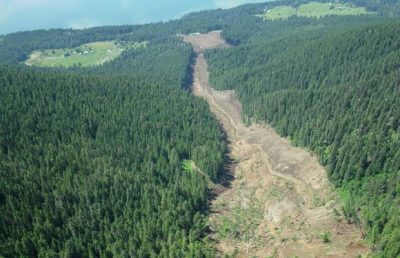
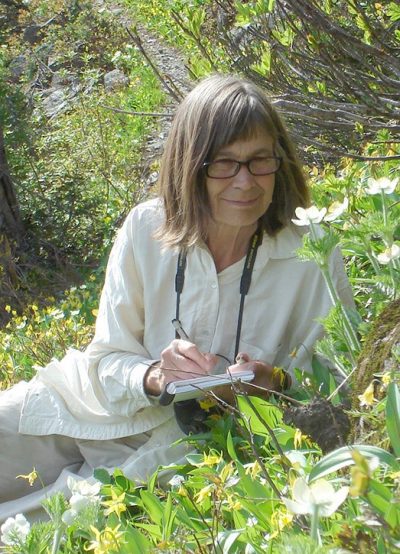

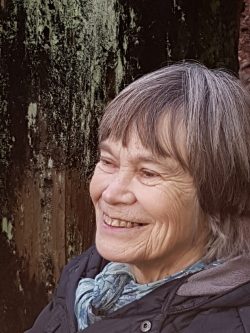




Leave a Reply